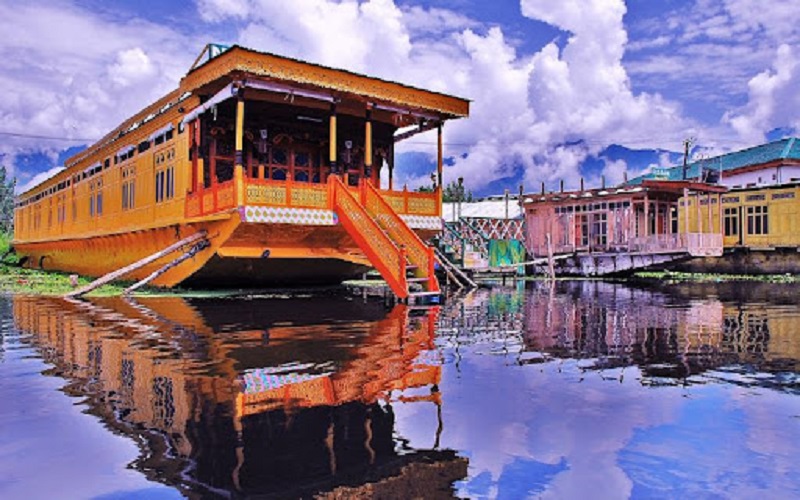Dive deep into the vibrant world of Andaman’s coral reefs and discover their importance in preserving marine biodiversity. Learn about the measures being taken to safeguard them and how to reach Andaman to witness this underwater marvel.
The Andaman Islands, a sparkling jewel in the Bay of Bengal, have long been celebrated for their pristine beaches and turquoise waters. But beneath the waves lies a treasure of even greater significance – the island’s vibrant coral reefs. These ecosystems, brimming with life and color, are not just vital for the marine biodiversity they support but are also indispensable for the future of our planet.
The Underwater Marvels of Andaman
The coral reefs of Andaman are a diver’s paradise. Bursting with hues of pink, blue, yellow, and green, these underwater gardens house a plethora of marine species. From the delicate clownfish darting between anemones to the majestic manta rays gliding overhead, the biodiversity here is staggering.
But beyond their beauty, these reefs play a crucial role in marine ecology. They act as breeding grounds for many fish species, protect coastlines from erosion, and even support local economies through tourism and fisheries.
The Threats They Face
Despite their importance, Andaman’s coral reefs are under threat. Climate change, with its resultant sea-level rise and increasing ocean temperatures, poses the most significant challenge. These factors lead to coral bleaching, where corals expel the algae living in their tissues, causing them to turn white and making them more susceptible to diseases.
Moreover, overfishing, plastic pollution, and unchecked tourism are exacerbating the decline of these sensitive ecosystems.
Conservation Efforts in Play
Recognising the importance of these reefs, both for biodiversity and human sustenance, various conservation efforts have been initiated in the region:
- Marine Protected Areas: Parts of the Andaman Sea have been designated as protected areas, restricting activities that could harm the coral reefs and the marine life they support.
- Eco-Tourism: Emphasis is being placed on promoting sustainable tourism. This includes educating tourists about the fragile marine environment and promoting responsible diving practices.
- Reef Restoration Projects: Efforts are being made to restore damaged parts of the reef through techniques like coral transplantation.
TRAVEL TIPS:
- Responsible Diving: Always maintain a safe distance from the corals. Avoid touching or stepping on them.
- Biodegradable Sunscreen: Conventional sunscreens can harm corals. Opt for biodegradable ones that won’t harm marine life.
- Mind Your Waste: Ensure you don’t leave behind any trash. Plastics, especially, can be fatal to marine organisms.
- Support Local Conservation: Participate in local conservation programs or contribute to NGOs working in reef preservation.
- Educate Yourself: Before diving, educate yourself about the marine species you might encounter and how to interact responsibly.
How to Reach Andaman
For those eager to witness these underwater marvels, figuring out how to reach Andaman is quite straightforward. The Andaman Islands are well-connected by air and sea. Direct flights operate from major Indian cities like Chennai, Kolkata, and Bangalore to Port Blair, the capital city. Alternatively, regular passenger ship services are available from Chennai, Kolkata, and Visakhapatnam to Port Blair.
In Conclusion
The coral reefs of the Andaman Islands are a testament to the wonders of nature and are vital for the preservation of marine biodiversity. As visitors, it becomes our responsibility to ensure that our actions don’t harm these fragile ecosystems. By adopting sustainable practices and supporting local conservation efforts, we can ensure that these underwater paradises continue to thrive for future generations.
Note to Readers: The beauty of nature is a shared inheritance, and its preservation is our shared responsibility. When in Andaman, tread lightly, leave no trace, and cherish the wonders that the islands bestow upon you.
Frequently Asked Questions (FAQs)
- What is the best time of year to visit Andaman for diving and exploring the coral reefs?
Answer: The best time for diving in the Andaman Islands is between November and April when the waters are calm, clear, and visibility is at its peak. The monsoon season, from May to September, is less ideal due to rougher sea conditions. - Are there guided tours available for exploring the coral reefs?
Answer: Yes, there are numerous dive centers and eco-tourism agencies in the Andaman Islands that offer guided snorkeling and diving tours. They provide both training for beginners and advanced dives for experienced divers. - How is the health of the coral reefs in Andaman compared to other regions?
Answer: While Andaman’s coral reefs face threats like other reefs worldwide, conservation efforts have helped maintain their health. They remain among the more vibrant and diverse reef systems, especially in areas protected from human activities. - Can non-divers experience the beauty of the coral reefs?
Answer: Absolutely! Apart from diving, snorkeling is a popular way to get a glimpse of the underwater world. Glass-bottom boat rides are also available in certain areas, allowing visitors to see the reefs without getting wet. - Are there any specific regulations or guidelines for tourists visiting the coral reefs?
Answer: Yes, many areas within the Andaman Islands have specific guidelines to protect the coral reefs. This includes not touching or stepping on corals, not collecting marine life, and following designated paths or zones when diving or snorkeling.hared inheritance, and its preservation is our shared responsibility. When in Andaman, tread lightly, leave no trace, and cherish the wonders that the islands bestow upon you.



